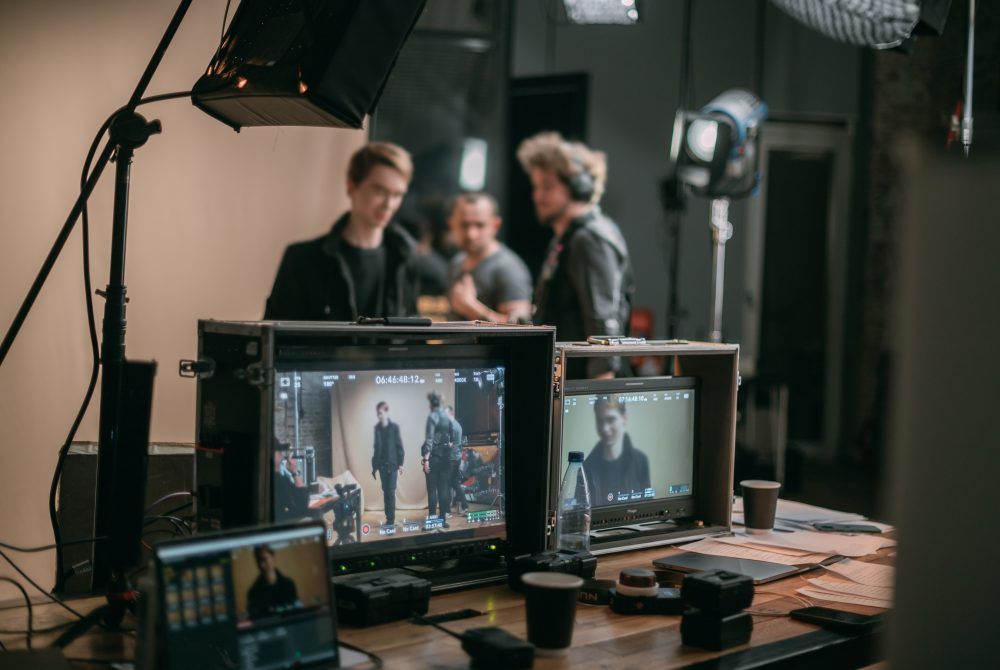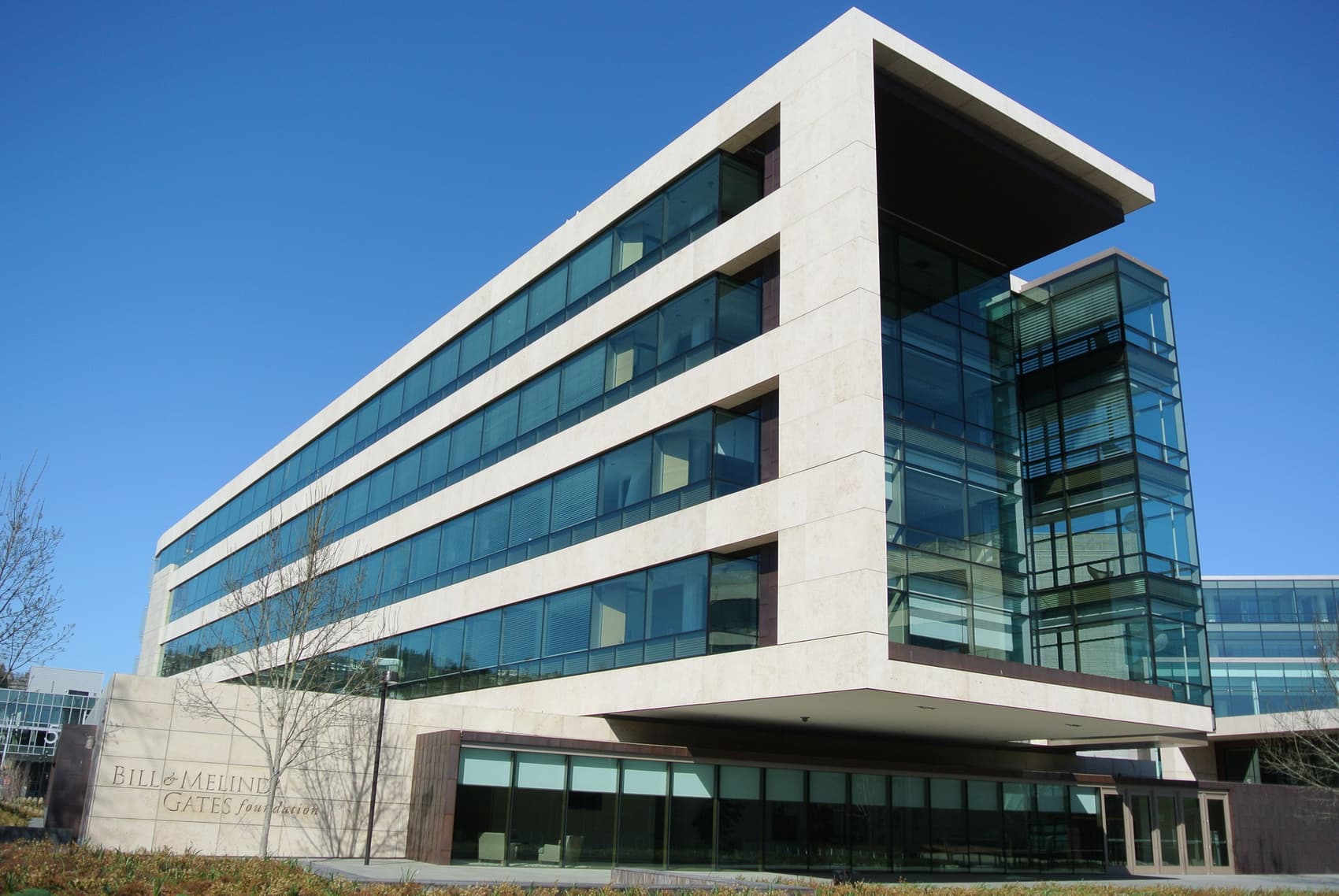13 Oct 2025
10 min
Fixing the News: Stories That Inspire Change

On Monday, Angus Hervey, the political economist and founder of the successful solutions-journalism-focused newsletter Fix the News, sat in a white armchair onstage in a large theater at L.A.’s Getty Center, talking about media to an audience of more than 500 Hollywood creators and executives, 150 independent content creators, and leaders in philanthropy, advocacy and government, all invited to attend “A Day of Unreasonable Conversation.” The annual conference, produced by Propper Daley/BPI in partnership with Invisible Hand, and first held in 2019, was supported this year by more than a dozen funders and partners, including Imaginable Futures, Omidyar Network, Stand Together, Carnegie Corporation of New York, Hilton Foundation, New America, and for the first time, the Elevate Prize Foundation and journalism funder the Knight Foundation. And in a first this year, former Vice President Kamala Harris gave the keynote address, sitting on stage with WNBA player, Olympic gold medalist and activist Napheesa Collier. “The news is a misery machine,” Hervey said, noting that the old tabloid approach of “if it bleeds, it leads” has become the fundamental driving force for pretty much all media, from legacy publications to solo creators on TikTok. Yes, misinformation and disinformation are driving our nation apart, but mainstream media’s nosedive into the muck isn’t helping. In his analysis, the problem isn’t just fake news, but also overly negative news that divides people, brews mistrust and ultimately drives people away from engagement with the democratic process. Philanthropy has been scrambling to save the news ecosystem, citing a free press as critical to the survival of democracy. Recently, Press Forward, a philanthropic coalition of more than 90 funders, announced $22.7 million to 22 local news organizations and coalitions for projects “that address the urgent challenges local newsrooms face today.” The Alaska Community Foundation created a pooled fund this year to keep the state’s locally owned public media stations on the air. And another group of leading philanthropic funders committed $36.5 million in emergency funding for at-risk public television and radio stations. But what if the news ecosystem is no longer the force it once was — both too weakened by business pressures and too mistrusted by a populace that gets its information from friends and influencers? Should social impact funders be gathering changemakers into a room with content creators and film and television leaders — instead of focusing on the news? Or in addition to it? Is pursuing narrative change storytelling through entertainment the new power move in the face of the shrinking fourth estate? These were some of the major questions animating and underlying many of the conversations of the day. Yes, many people (still) think bad news is all the news First, what’s wrong with the news: Hervey outlined the danger of our daily diet of disaster. Since 2008, negativity has increased three-fold. Mistrust of our neighbors and institutions, of our government and hard science runs rampant, leaving a gaping hole for authoritarianism to take root. Though the murder rate is down across the country, people believe murder is on the rise. Meanwhile, amazing discoveries and advancements barely make the back page of a traditional newspaper, let alone most social media feeds. In the past month, while Charlie Kirk’s assassination was the leading story pretty much everywhere, patients enrolled in a three-year clinical trial for Huntington’s disease, a fatal disease with no cure, experienced 75% less disease progression, an unprecedented milestone. New data from the World Bank shows that nearly 100 million children were lifted from poverty in the past decade. Philanthropists in New York announced deals to supply lenacapavir, a twice-yearly injection that blocks HIV transmission, to 120 low- and middle-income countries, a move that activists are calling the biggest breakthrough in the fight against AIDS in decades. This summer, the United Nations International Court of Justice — a court whose jurisdiction the U.S. does not recognize — issued a landmark opinion that nations that accept the court’s authority have a legal duty to prevent and protect against climate change and can be held accountable for inaction under international law. Sure, these stories were covered here and there. But ask most people, and this progress is probably news to them. I heard some of these same concerns — and the exact same murder-rate stat — voiced by Solutions Journalism Network President Sara Catania last week in a conversation at the University of California, Berkeley’s graduate school of journalism. As Catania told the crowd of parents and alumni, good news matters because people think the chaos and calamities are the whole story. Catania touted the solutions journalism approach of expanding coverage to include not just society’s failures, but also its fixes. Hervey said that while the media can’t fix the problems it has helped create via its excessive negativity, entertainment can by shaping stories that show progress, connection and nuance. “This room includes some of the most influential storytellers on the planet,” he said, meaning the showrunners, writers, content creators, singers and stand-up comedians in attendance at the star-studded convening. “Things are evolving, breakthroughs are happening. Ordinary people are taking on impossible challenges and they’re pulling it off,” he said. “It’s not feel-good fluff. It doesn’t rely on black-and-white morality tales or lazy, fear-based books. It’s about what it really costs you to fight against the regime that is more powerful than you.” He closed with an inspiring (and entertaining) video of a national wildlife park in his native Mozambique that has been repopulated with wild animals. How collective illusions undermine democracy Todd Rose, a former neuroscientist and the author of “Collective Illusions: Conformity, Complicity, and the Science of Why We Make Bad Decisions,” spoke next at Unreasonable Conversations, on a panel with “Westworld” writer/co-creator Lisa Joy. Rose, too, pointed out the problems caused by news, such as it is, and social media. Rose, who is also co-founder and CEO of Populace, a think tank working to create a “virtuous cycle” through narrative change and systems change, explained the idea of “collective illusions.” A collective illusion is a type of group-think in which individuals misread the views of the group and silence their own thoughts to fit in with (what they wrongly think) others believe. Collective illusions are infecting our democracy, due in part to social media’s negativity-fueling algorithms, Rose said. Neuroscience helps explain this spread: Being part of a group triggers a reward response in the brain and the brain mistakes the loudest voice in the room with the most true. On X, to cite one platform, 10% of the users post 80% of the content, making the rest of us (wrongly) assume the platform reflects the dominant view. “That 10% isn’t remotely representative of the general public,” Rose said. “They’re extreme on almost every social issue.” Rose cited research showing that in the lead-up to the 2020 elections, more Democrats wanted Sen. Elizabeth Warren to be president than anyone else, but they also were convinced that others wouldn’t vote for her. Because of their conviction that Americans weren’t ready for Warren, primary voters did not select her for the ticket. (Though with two female nominees losing, one might wonder if the pessimists were, in fact, correct.) Today, the consequences of collective illusions about politics are dire and pose the greatest invisible threat facing our society, Rose said. Self-silencing makes us vulnerable to divisive leaders, in part because of our record low level of trust in one another. Self-silencing makes people feel alone, alienated and even physically ill. Entertainment can help, he said, by writing the truth into the background of stories — not by lecturing, but by layering it in. There was definitely an awareness of the perils of a scripted inclusiveness that feels fake, pedantic and turns people off. But good writers can make good news into good stories, as many speakers reminded the audience throughout the day. An example of this might be a family show with members who love each other, even as their views about climate change differ. It could be a trans character who is just part of the story and having a joyful time. It could be a show about the immigrant dishwashers and cooks at a restaurant in L.A. “Your brain treats these characters as the in-group,” Rose said, and thus starts to see the reality of our nation as more inclusive and gentle, rather than the divided, black-and-white, us-versus-them vision that is so common on social media and promulgated by the current administration. Rose pointed to the Velvet Revolution in the former Czechoslovakia as an example that giving people space to express their true selves toppled 41 years of one-party communist rule. I found it heartening to think that poetry readings — or in our case, more nuanced shows to stream at night — could save our democracy. But still, it’s hard to imagine a world where reporting doesn’t play an important role by uncovering new facts that, over time, shape new narratives.
Philanthropy isn’t turning its back on the news, but it is leaning into the role that entertainment can play. And Hollywood events high up in the hills always feel more hopeful than, say, drinking Diet Coke at a dive bar with journalists on tight budgets. The optimism of the entertainment industry is partly about the real money that can — and is — being made, along with the catered lunches, and, in this case, performances by bands such as singer/songwriter Linda Perry and rapper Ruby Ibarra. But it’s also about the excitement of creativity. There’s that buzz of creation and the knowledge that millions of people around the world actually care about what you’re making and love it. Still, as a journalist who believes in the power of the truth to shape opinion and policy, I think philanthropy should continue to support the news — and even help fund organizations working with solo creators who have not had the benefit of studying journalism or holding down a media job. Today’s influencers need training in journalism standards and ethics. And young people need media literacy and civic education, areas ripe for more funding. Pie in the sky, a philanthropic billionaire or several could also work to buy TikTok or X and install better algorithms, ones that don’t recommend stories most likely to cause division due to a profit-driven motive of keeping eyeballs on the screen — another idea that arose during the day. “The world can fall apart, but the world can also be remade. Both of those stories are true. We just have to decide which one we are going to be a part of,” Hervey said.
Share this Article
Next Read

We Are the Ones We’ve Been Waiting For
A reflection on everyday generosity and collective impact in communities

Chuck Feeney: The Billionaire Who Gave Away His Fortune
The inspiring story of Chuck Feeney, the billionaire who donated his wealth

Gates Foundation’s $2.5B Pledge for Women’s Health
Bill Gates commits $2.5B to advance global women’s health initiatives